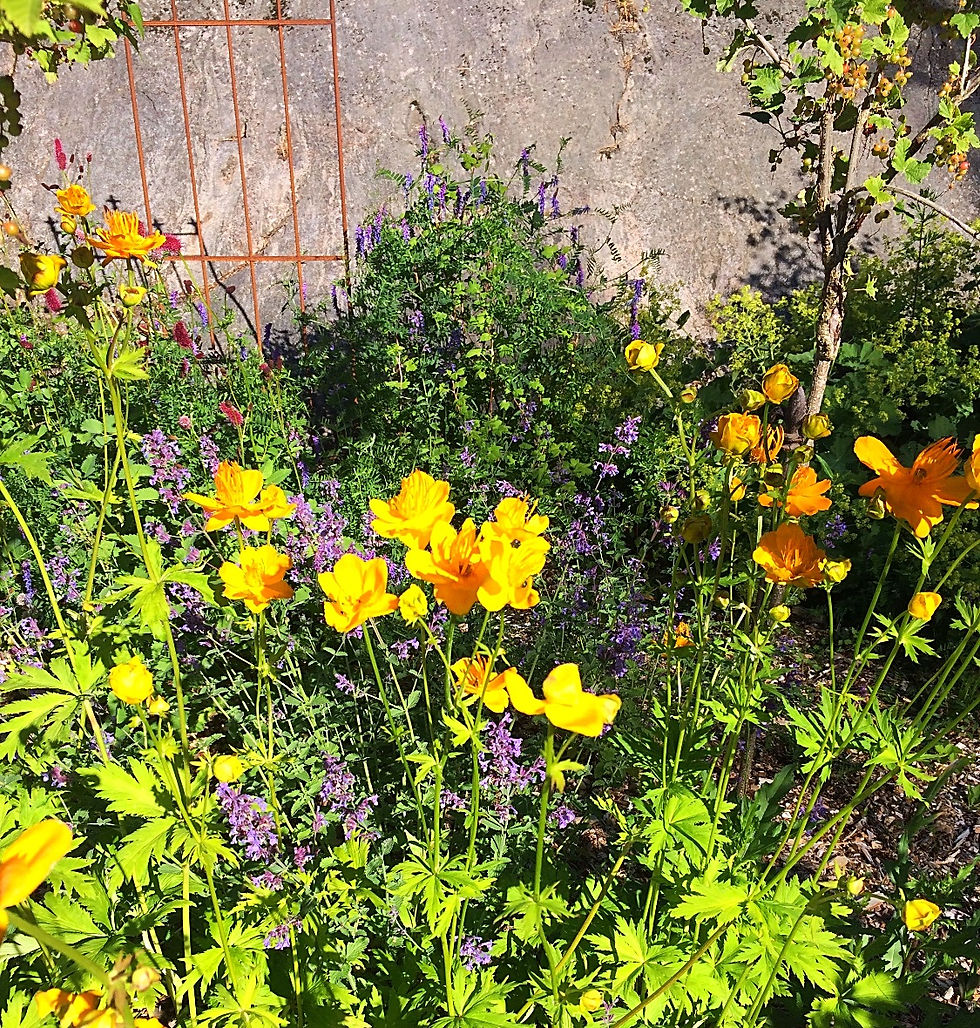How I use wood chip mulch in my garden
- Sofias Country Gardens

- May 12, 2018
- 4 min read
Updated: Aug 8, 2019

One of the great benefits of having a farm with large woods is the abundant raw material I have access to. Each year there are trees that need to be felled, or fall down in a storm, that leave branches and twigs to be turned into wood chips. Opinions seem to be divided as to how useful a material it is in the garden but personally, I love to use it as a mulch in my borders. Because my garden is in the middle of the countryside, it is obviously surrounded by wilderness and although I love the nature around me it is a challenge to keep it at bay. As the old proverb goes, weeds are only plants that are growing in the wrong place! And trust me, I have a lot of those...
Firstly, I only use wood chips in the decorative borders or on paths. I know there are many who use it in the vegetable garden too, but there are so many trial reports that find it has an adverse effect on vegetables that I have decided against it. The adverse effect may be because conifer chipping tend to make the soil more acid, or because wood chips introduce more fungus to the soil which can affect the balance between bacterial and fungal dominance in the soil. Then again, it may be because there is a high carbon to nitrogen ratio in wood chips, which may adversely affect vegetable growth if it is not offset by sufficient manure. Either way, I prefer to use only compost or rotted manure in the vegetable garden as I find it gives the best results.
In my flower borders, on the other hand, I find wood chips work beautifully. Perennials tend to dislike being crowded out by weeds, and conversely do enjoy a steady moisture retention in the soil. But, because the grass is so strong and I have a constant battle against evil invaders such as thistles, I always try to line the ground underneath the wood chips with some other material that doesn't let those thugs trough. Below, I will show you how I do it.


In places that I know will not be cultivated for some years, such as around shrubs, trees or on pathways, I use a weed-suppressing fabric bought from the hard ware store. It is biodegradable in some three to five years time, which is so long term that anything growing up beneath it will have died off. I always have spare bricks or rocks lying around in the garden, so I weigh it down properly before I mulch. I make sure to cut a slit in the fabric and then place it around the shrub without it actually touching the stems, leaving some bare earth just there at the base of the shrub or tree. This is because most woody shrubs and trees don't really like being covered up, as the constant moisture can lead to problems with fungal disease or insects.


On the other hand, in borders where I know I will want to plant bulbs in the foreseeable future, I use newspapers. Way back years ago the use of newspapers was discouraged because of the lead in the printing ink, but nowadays even the ink is made from more environmentally friendly compounds so it is no longer a problem. Newspapers rot down enough to be poke holes in during one season, so planning for autumn planting of bulbs is fine. However, if there are stubborn weeds in such areas, I need to scrape off the wood chips the next spring again and re-lay the mulch to prevent the weeds from reoccurring next summer. As I lay out the newspapers I wet them thoroughly in a bucket of water first, because it makes them stick to the ground and starts the decay process.

As you can see I have been careful to lay the newspapers AROUND any herbaceous plants and shrubs, leaving gaps in the pattern, to give them ample room to grow and flourish. It does look a bit kooky with the newspapers laid out before the wood chip mulch is added, but actually this method of weed suppressing saves me so many hours of work in the garden each year. At the same time I also plant in new seedling plants where needed to fill in any glaring gaps in the border.

At this time of year, this flowerbed does not look like much! But just you wait and see in summer when I post pictures of it as the plants have filled out and you won't believe the difference! That is the secret of successful cold climate gardening: one has to imagine what will come and gently make the beds before anything starts growing. Taking the time and making the effort now pays off a thousand times in July, when the vegetable garden demands all my attention and I can simply enjoy the beautiful herbaceous borders I created in spring. I hope you will be inspired by the pictures top and bottom of this article that are from last summers borders where the wood chip mulch is barely visible to the right!







Comments